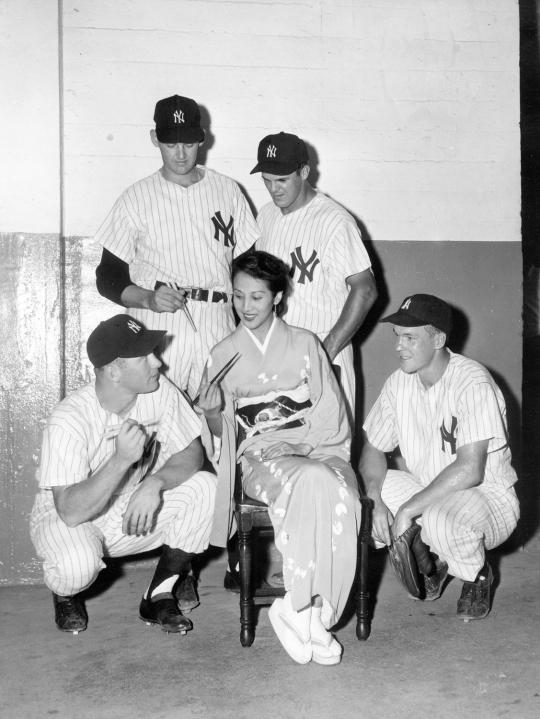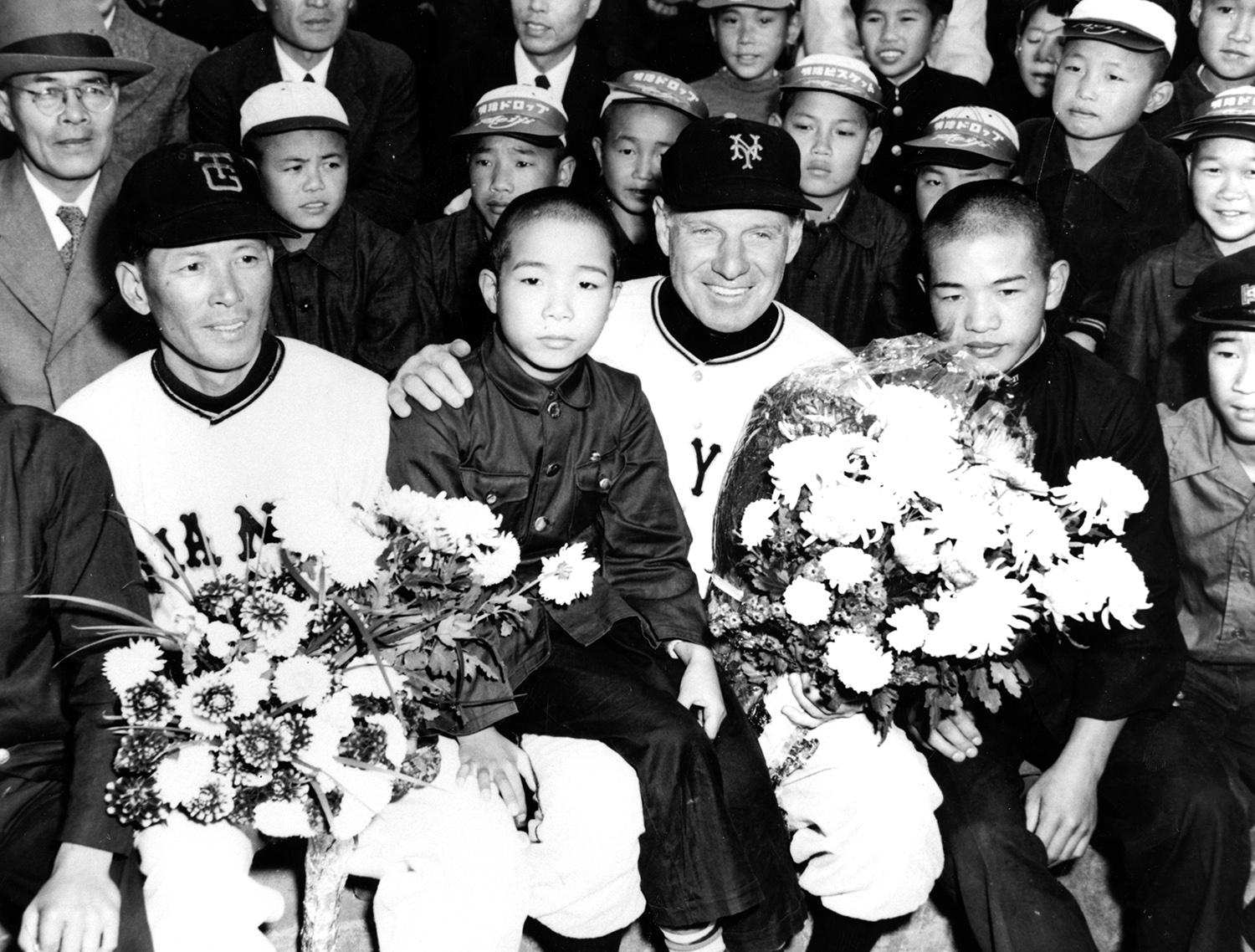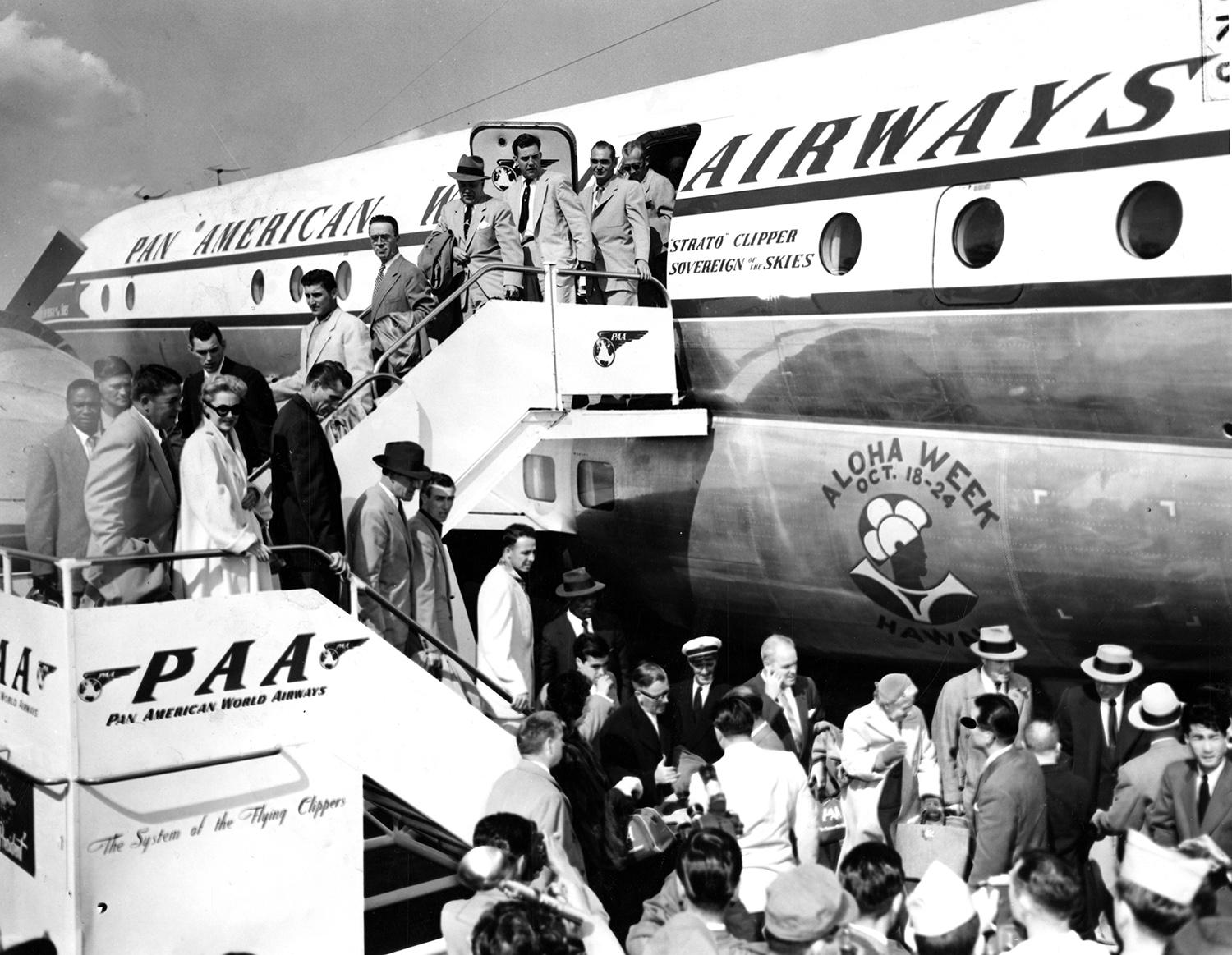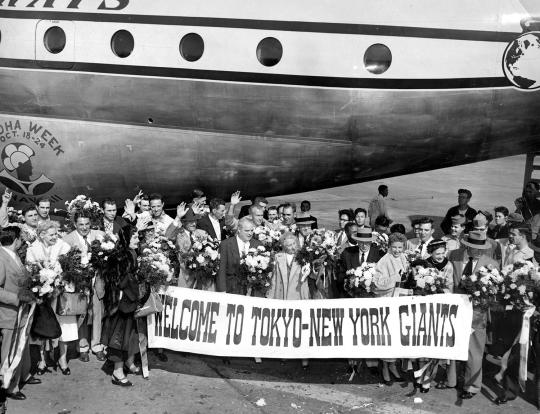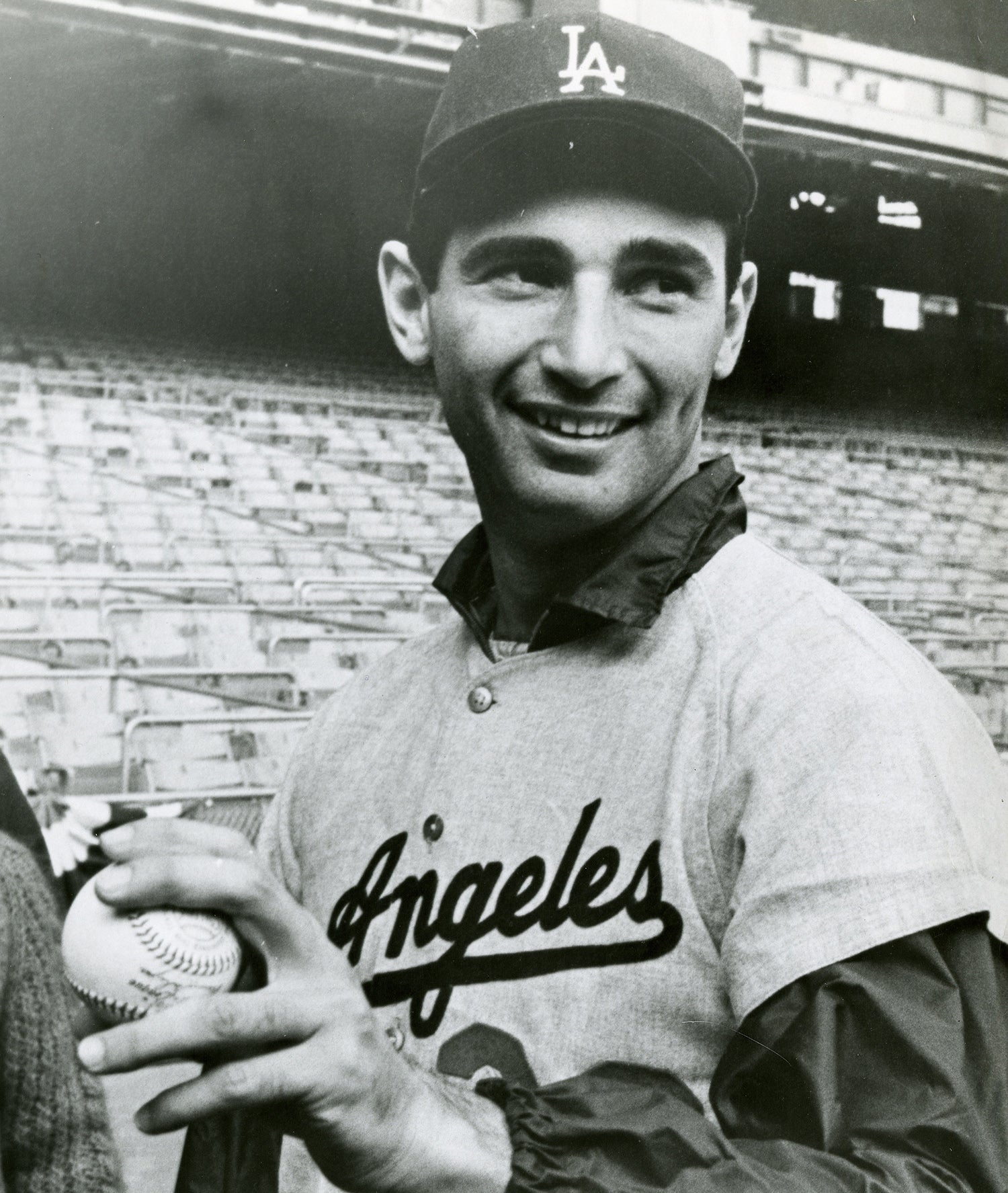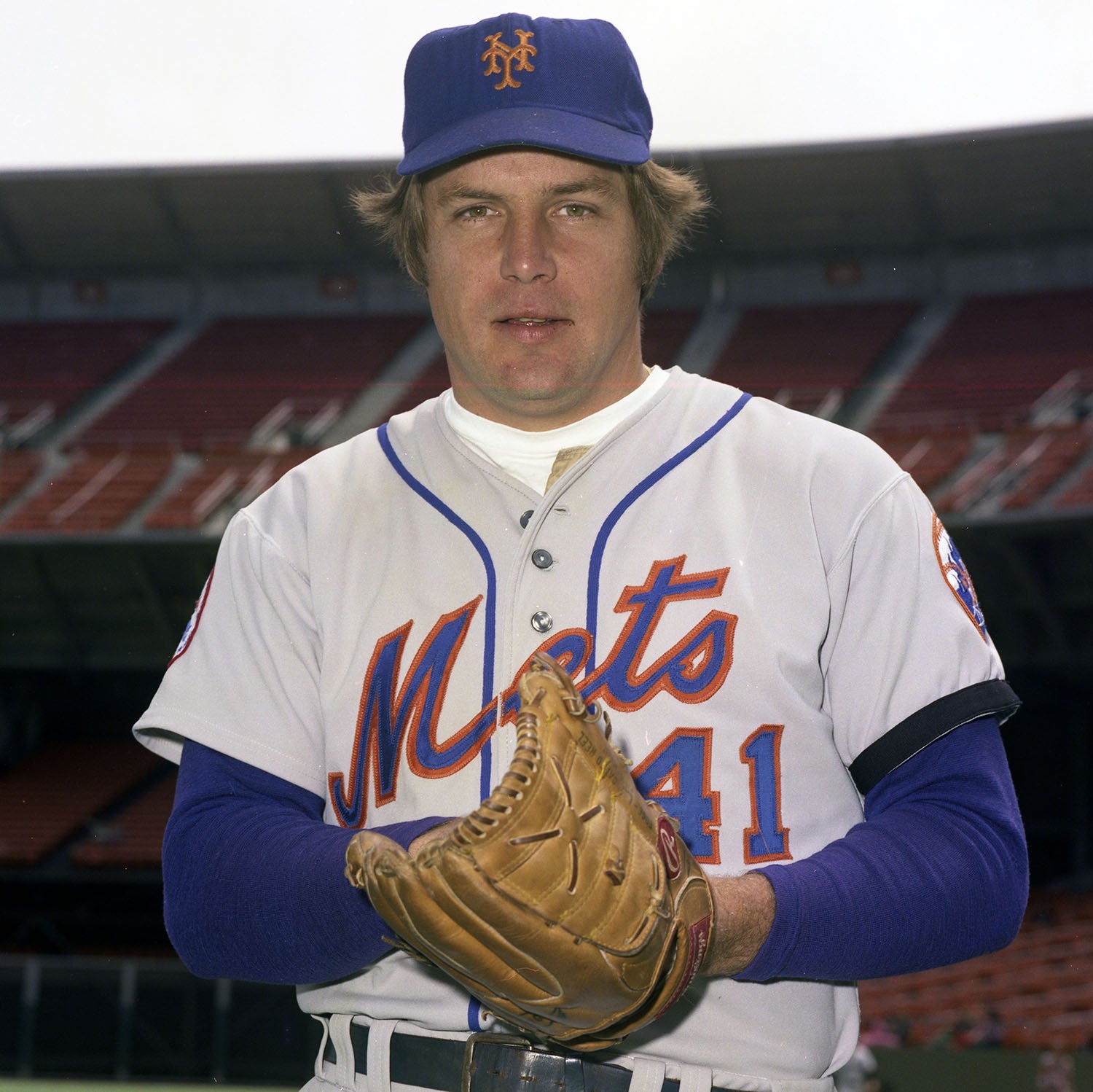- Home
- Our Stories
- Team Tours of Japan bridged cultural gap following World War II
Team Tours of Japan bridged cultural gap following World War II
As American participation in the Korean War wound down and with Japan still in a state of post-World War II recovery, baseball would again see itself as a bridge between cultural divides.
Several times before World War II, big leaguers and Negro Leaguers visited the Far East on barnstorming junkets or as part of world tours. With the end of hostilities, Lefty O’Doul and Eddie Lopat commandeered major leaguers on barnstorming tours. But no single major league team had yet gone across the Pacific to take on Japanese counterparts.
Until 1953.
On June 29, 1953, New York Giants president Horace Stoneham conditionally accepted an invitation from Shodi Yasuda, president of Japan’s Yomiuri Shimbun newspaper, to play a series of exhibition games throughout Japan. One of the teams the Manhattanites would play would be Yasuda’s Yomiuri Giants, a powerhouse in Nippon Professional Baseball.
“We are very pleased to have received this invitation,” Stoneham told The New York Times. “And, if details are worked out, we hope to make the trip.”
The Giants had the blessing of the federal government but not from baseball’s highest powers. That would occur two weeks later, however, when major league owners, meeting in Cincinnati for the All-Star Game, voted to allow the Giants to make the trip. The owners needed to waive rules which permitted a limited number of a team’s players to participate on a postseason barnstorming club, as well as the rule which forbade barnstorming after a certain point following the World Series.
Reaction to the news was welcomed in Japan.
“We appreciate Mr. Stoneham’s offer of the ball club to go over to Japan. It will be a great thing for both countries,” said T.P. Harata, the Tokyo Giants’ general manager.
The Japanese newspaper was expected to cover all the expenses of the New York Giants’ trip, including airfare. Any profits would be turned over to charities. The Giants left San Francisco on Oct. 9 for Hawaii, where they would play games before flying to Japan.
On Oct. 17, fresh off a victory in the Japan Series, the Tokyo Giants took on the New York Giants in the first game of the Americans’ 14-game tour of Japan. The New Yorkers opened the floodgates late in an 11-1 win, the first of nine straight victories against the Japanese. Ultimately, the New York Giants would go 12-1-1 against various Japanese teams in Japan, but the Stars and Stripes newspaper reported there was some disappointment regarding payouts for the Americans.
However, when the Giants arrived in the Philippines on Nov. 13 to play two games, Stoneham called the trip a “great success” and a “goodwill gesture” for which they “received an enthusiastic response.”
New York manager Leo Durocher complimented the Japanese, noting “they play fine baseball.”
The general good feelings surrounding the tour paved the way for several future visits from other major league squads. In 1955, the New York Yankees travelled to Japan, courtesy of the Mainichi Newspapers Co., Ltd., after their World Series loss to the Dodgers.
But the defeat did not mean much to the Japanese crowd. Throngs packed the streets of Tokyo to welcome the Yankees, and as one newspaper noted, “The Yankees certainly still are the champs to Japanese baseball fans.”
Even with the loss of Mickey Mantle halfway through the trip, New York outpaced its competition, compiling a 15-0-1 record – the only undefeated record by any major league team on a Japanese tour. Yet the goodwill gained off the field far offset the Japanese losses on the field. Newspapers reported that the Japanese fans were sorry to see the team end its tour and return to the United States. Others clamored for the Yankees’ to come back in the future.
It would not happen, though. In 1956, the Dodgers would make their first trip to Japan, and the Cardinals, Giants, Tigers, Orioles, Mets, Reds and Royals would all make at least one postseason visit before the tours ended in the mid-1980s. San Francisco organized a preseason tour in 1970.
While most of the major league teams handily outperformed the Japanese competition in early tours, by the mid-1960s, it was apparent the opposition’s talent was quickly catching up.
The Los Angeles Dodgers’ 18-game trip in 1966 was marred by controversy, as Sandy Koufax, Don Drysdale and Wes Parker declined to go to Japan despite pleas from Japanese organizers, hurting ticket sales in the various cities on the tour. It also did not help when team captain Maury Wills left the team a week into the tour to return to the United States for treatment on his injured leg, leaving Dodgers president Walter O’Malley to say “a higher degree of devotion to duty was expected” of Wills as captain.
Koufax announced his retirement shortly before the team’s departure from Japan. Ending the tour on a four-game losing streak, the Dodgers’ eight losses are the most by any of the major league teams which visited.
When the New York Mets visited in 1974, the tour came with an added sideshow. On Nov. 2, prior to the Mets’ game in Tokyo against a Japanese All-Star team, the 50,000 fans were treated to a home run-hitting contest between Hank Aaron and Sadaharu Oh. The duel, broadcast by CBS on a tape delay basis in the United States, saw the major league home run king edge his Asian counterpart 10-9.
Aaron admitted to being “rusty” following a long flight and not having had batting practice in a month. Oh’s unorthodox batting stance caught the eye of the Americans.
“I don’t know how he keeps his balance when he swings,” noted Mets ace Tom Seaver.
In 1978, not even a 14-2-1 record against Japanese teams, following a second-place regular season finish, could save Sparky Anderson. The Cincinnati Reds manager, with two World Series titles to his credit, was fired shortly after returning from Japan.
Pictured above, Maury Wills of the Los Angeles Dodgers (right) talks to a Japanese baseball player during the Dodgers tour of Japan following the 1966 season. Wills embarked on the 1966 tour, but had to leave early for a treatment on his injured leg. (National Baseball Hall of Fame)
“The team just got back from Japan, and it was a super trip,” Anderson told reporters. “(Reds president) Dick (Wagner) even congratulated me on how we’d done.”
Since the Orioles’ tour in 1984, the last one done by a single major league team, all-star teams from Major League Baseball and Nippon Professional Baseball have squared off multiple times after the season’s end. More recently, Japan’s national team has competed against the Americans and took the last challenge, winning three out of five games in 2014. The 2016 series was canceled in favor of the World Baseball Classic, but the series is expected to resume in 2018.
Matt Rothenberg was the manager of the Giamatti Research Center at the National Baseball Hall of Fame and Museum
Related Stories

The Braves trade Hank Aaron to the Brewers
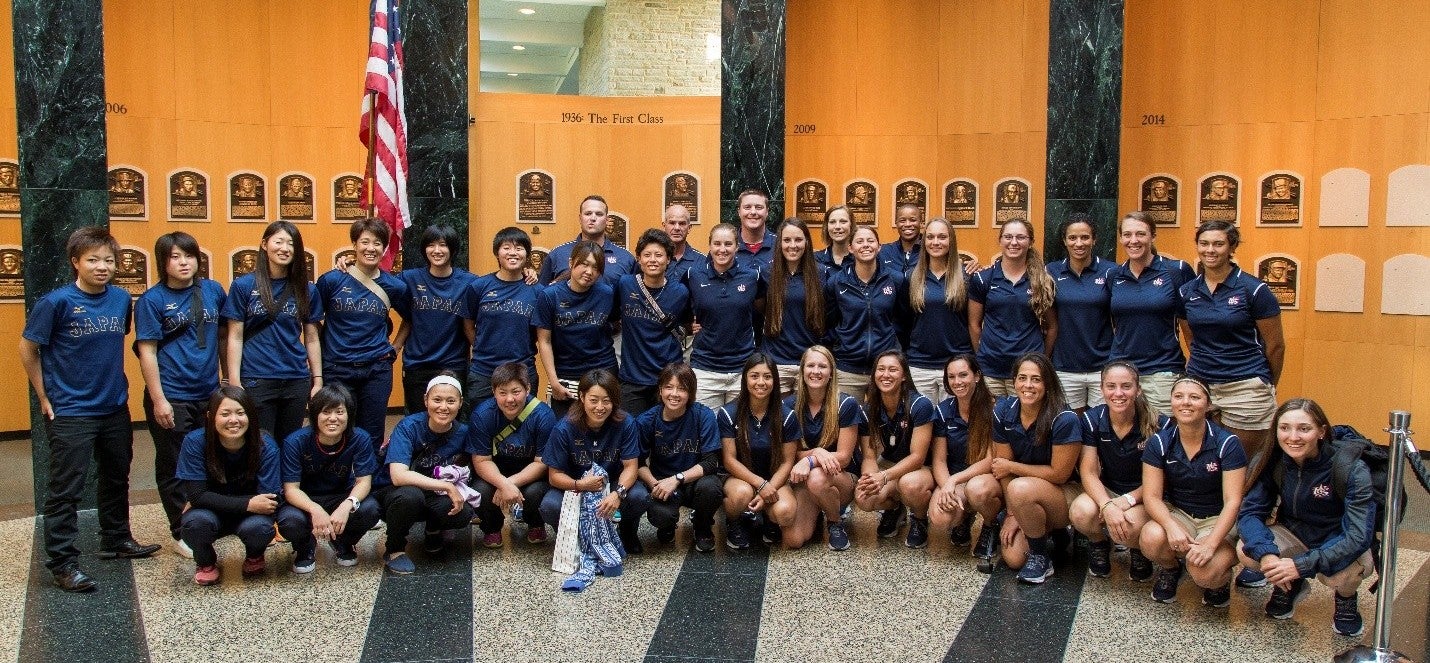
U.S., Japan All-Stars Bring Talents to Cooperstown
Related Stories

The Braves trade Hank Aaron to the Brewers


